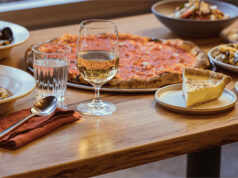After dark, milk and white chocolate, ruby is the most extraordinary discovery in 80 years. This 4th type surprises with a completely new taste and color – purely natural from the ruby cocoa bean – without adding any colorants or fruit flavorings.
Why is ruby the 4th type?
After dark, milk and white chocolate, ruby stands out with its distinct, fruity taste and extravagant color. It owes these characteristics fully to the unique ruby cocoa beans selected. Just like with dark, milk and white chocolate, no colorants or flavorings are added.
How does ruby taste?
Very different from any other chocolate in the world, ruby has a fruity, berry-like taste with fresh, sour notes. The taste itself comes from the cocoa beans selected. Delicate processing of the beans preserves these fruity-sour flavors.
Where do the ruby taste and color come from?
Discovered first by accident, Callebaut’s chocolate makers found out that unique components,
naturally present in cocoa beans, yield chocolate with an exceptional red-pink color and fruity taste.
Everything pointed towards the precursors in a specific type of bean: the ruby cocoa bean. Identifying the ruby cocoa beans – which hold plenty of these precursors – and finding the best way to process the beans during chocolate making has taken years of research in collaboration with the Jacobs University in Germany. After more than a decade, Callebaut’s chocolate makers and cocoa experts cracked it and finetuned the
selection and processing of the right cocoa beans. With ruby RB1, Callebaut composed the first ruby couverture dedicated to chefs.
Where are the ruby cocoa beans grown?
They’re grown in the traditional cocoa growing countries Brazil, Ecuador and Ivory Coast. Neither genus or origin determine the qualification for a cocoa bean to be a ruby bean. It’s the inside of the beans that counts. The natural occurrence of the sought-after precursors determines whether a cocoa bean will yield the typical ruby color and taste during processing. Exactly those beans are selected to make ruby.
How to work and create with ruby?
There are a few simple rules of thumb when working with ruby. Melting, tempering, molding, enrobing, etc. are completely comparable to working with dark, milk or white chocolate. Callebaut chefs recommend using ruby as pure as possible, and avoid mixing it with creams, milk or water-based ingredients. The latter bring down the higher acidity of ruby, which may lead to dilution of its typical taste and color.
In short: ruby is simply great in bars, tablets, bonbons, hollow figures, coffee treats, ruby dipped pastries, cookies and ice creams.
Which flavors work with ruby?
Ruby is exceptional for guests and customers to taste and enjoy as such in a variety of applications. It can be combined with traditional fruits such as dried raspberries, passion fruit, nuts, beetroot, etc.
Because of its unique and different taste profile, ruby opens up to completely new pairings as well. Exactly this makes ruby an exceptional product that appeals to a new audience of centennials and millennials. They’re eager to explore new sensations and love the high Instagram-appeal of ruby.
















